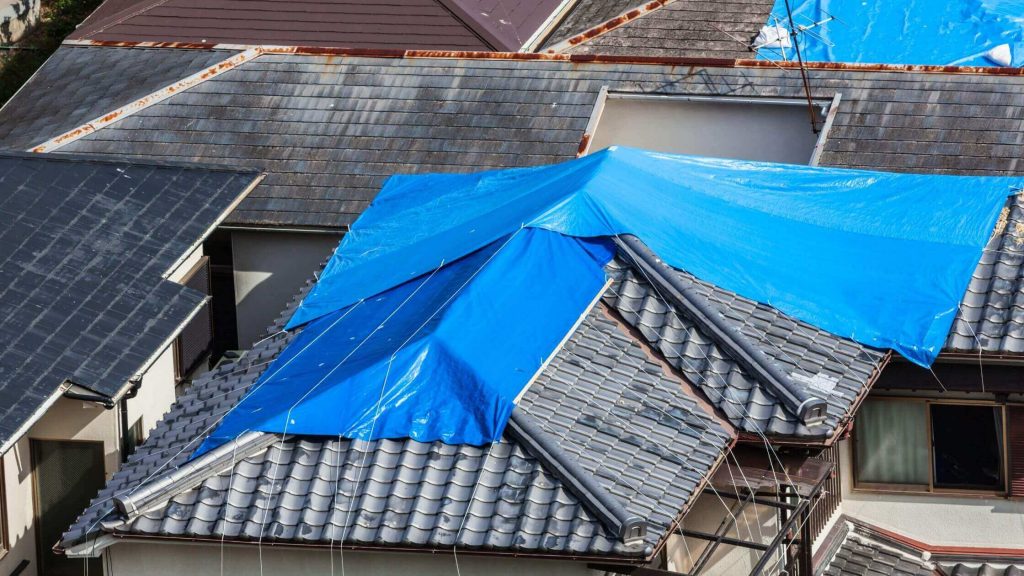As storm season approaches, ensuring your roof is ready to face the elements is more important than ever. A well-maintained roof not only protects your home but also provides peace of mind during unpredictable weather. In this blog, we’ll share maintenance tips from Cleanwrap to help you assess your roof’s readiness and keep your home safe. From inspections to preventative measures, let’s dive into what you can do to prepare for stormy skies ahead!
Before storm season, homeowners risk damage from rain, winds, and hail—roofs’ worst enemies. Proper roof maintenance is essential to prevent costly damage. Here are key tips to prepare your roof for harsh weather:
Conduct a Roof Inspection:
The first step to prepare for roof repairs during storm season is to conduct a thorough inspection.This helps identify any issues needing repair before a storm. You can hire a contractor or, if confident, inspect the roof yourself.
When inspecting your roof, look for these signs:
Cracked or missing shingles:
These small cracks can create weak spots that need protection from water damage and infiltration
Loose or broken tiles:
Storms can easily blow these away, exposing your entire roof to severe weather conditions.
Damaged flashing:
There is also use of flashings seals joints around chimneys; vents and skylights of the roof. A cracked pipe or loose or missing shingles can indicate a potential leak
Gutter issues:
Inspect gutters for blockages or low-hanging sections that collect water, which can lead to visible roof damage. If you’re unsure about safely checking for missing or damaged shingles, it’s best to hire an expert, as they can identify hidden issues that you might overlook.

Clear Debris From Roof and Gutters:
Debris like the leaves, twigs and dirt may accumulate on your roof along some specific period of time. Such debris particularly in the gutters act as a harbor for moisture promoting the growth of mold and mildew and even roof rot. Gutters and downspouts that are full with debris during stormy weather can spill over the edges which might lead to damage to your house walls or basement. To prepare your roof for the next storm, regularly remove debris from the roof and gutters. If gutters are blocked, consider installing gutter guards to prevent leaves from accumulating and obstructing rainwater flow away from your home.
Trim Overhanging Trees:
Recently, many storms have posed significant dangers, especially with overhanging branches. Strong winds can rip branches from trees, causing them to land on roofs. Furthermore, the fall of the foliage from the nearby trees can also fall on entail blocking the gutters therefore causing water accumulation which in the process leads further damage due to roof leaks.
Cut any branch that comes close to your roof since these branches may cause structural damage to your roof during a storm. When planting trees, remember to keep them at least six feet away from the house to prevent costly damage from falling branches during a storm. Although cutting may sound easy it is advisable to hire an arborist especially for large trees or branches close to power lines.

Check Roof Ventilation:
Another important factor is the effectiveness of a roof ventilation system since moisture accumulation is destructive to the roof structure. Proper ventilation prevents excessive humidity and condensation, reducing the impact of summer storms. Ensure your attic has adequate vents and that they are clear of insulation, debris, or other obstructions. Air circulation will ensure that the attic has proper ventilation since lack of fresh air will lead to stagnant air hence accumulating moisture which causes the mold to build up or rots the wooden parts of your roof.
Reinforce Roof Fasteners and Seals:
Storms often blow strong winds that can displace shingles, tiles, or metal panels of roofs allowing the harsh weather conditions to damage your roof. At the onset of a hailstorm, ensure all roofing materials are securely fastened to withstand the storm season.
SUse storm straps to enhance your home’s resilience. In areas prone to heavy rains, hurricanes, or severe winds, consider additional options like hurricane clips or roof tie-downs for added security. These are devices which hold the top shape the roof much closer to the structure of the building so that the strong winds are incapable of blowing off the roof during a storm.
Look for any gaps and cracks and seal these especially around those areas that contain flashes as well as other debris such as skylights, chimneys, and vents. Roofing caulk or sealant will seal areas and protect them from water intrusion and wind-driven rain and other debris that penetrates a building’s envelope.

Install a Waterproof Membrane:
Additionally you can add an extra layer in the roof maintenance tips form of a waterproof membrane under shingles or tiles especially in areas where there is heavy rainfall or snow. In this way, the presence of this membrane adds one more barrier against the penetration of water into the structure. If your roof has a storm strap, inspect it to ensure it’s still functional and hasn’t been damaged or blown away by age or previous storms.
Installing a new waterproof membrane can be costly, especially with professional help, but it provides valuable protection against leaks and water damage during heavy summer rains.
Inspect and Upgrade Roof Insulation:
Some homeowners add hurricane straps and reinforced garage doors for better protection summer storms and forget about the roof insulation. It is as important as other preparations you are willing to make for the storm. Insulation is all about helping to control the heating system and the cooling system in homes besides preventing formation of moist and this same moist from penetrating other vulnerable areas in the home safe house.
Insulation of the attic should be also checked and the damp and rain damaged ones should be replaced. Weatherproofing also adds to the durability of your house in terms of temperature, it can also save your money in the long run by cutting down your bills necessary repairs.

Prepare for Hailstorms:
Hail is one of the biggest dangers of roofs since it is common in many places to encounter hail storms. For areas that are prone to hail storms the most suitable materials for roofing are the impact resistant shingles or metal roofing. These materials help have an impact that is less on the roof due to the hailstone, hence be able to protect the roof. Furthermore, check all the roof skylights, or windows if they are strong enough or if they have any signs of crackline. Converting normal glass to the ones that cannot be broken by hail is ideal for your home during a hail storm.
Review Roof Warranty and Insurance Coverage:
Before storm season begins, review your roof’s warranty and homeowner’s insurance policy. Understanding what damages are covered and what is excluded is essential.
For instance, there may be policies that you have to follow to prevent leaks, things like never leaving your roof unattended by making regular checkups temporary repairs to the roof. If your roof is still under warranty but nearing expiration, contact a professional roofing contractor to evaluate whether it’s time to repair or replace it before the warranty expires.

Schedule Regular Professional Maintenance:
Finally, always hire a professional for routine roof maintenance to identify minor issues before they escalate, especially during storm season. A roofing expert thus can point out some areas of vulnerability for instance, worn flashings, deterioration of seals, or shingles that can give way during a storm. Owning a maintenance plan means that your roof is up to standard all the year round hence avoiding any storm risks.
Conclusion:

Preparing your roof is crucial for protecting your home during storm season. Steps like inspecting, cleaning, and reinforcing key areas enhance weather resistance, helping you avoid costly repairs and face storms with confidence.
Additionally, Cleanwrap specializes in maintaining clean environments, preventing dust and debris from disrupting clean-room standards in commercial spaces and retail settings. Our solutions are tailored to your needs.

